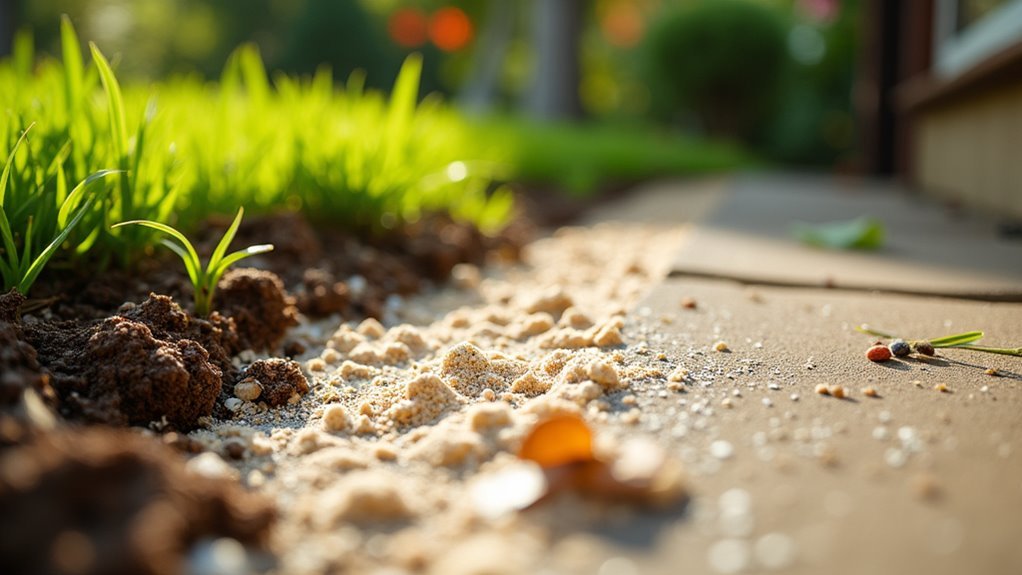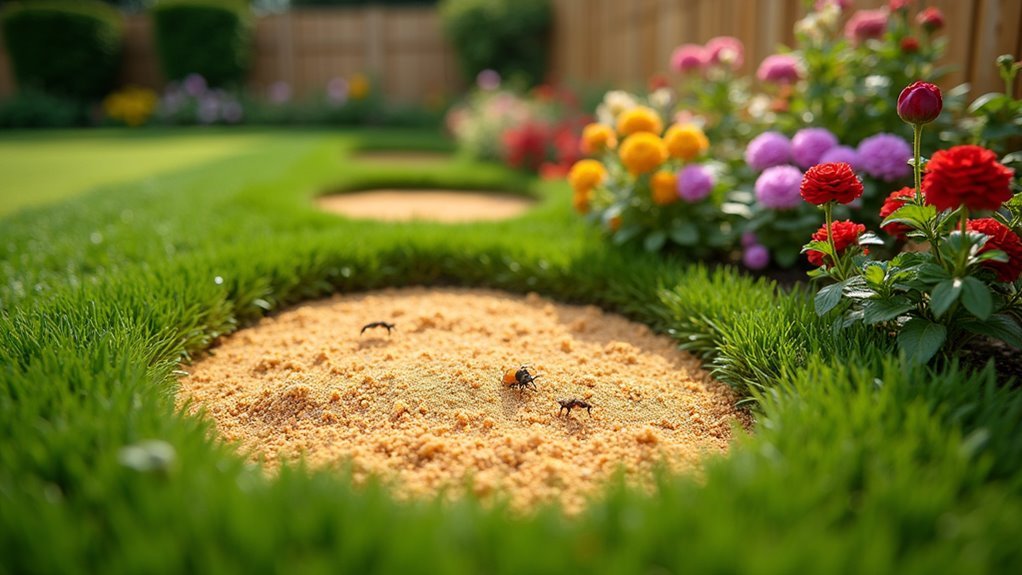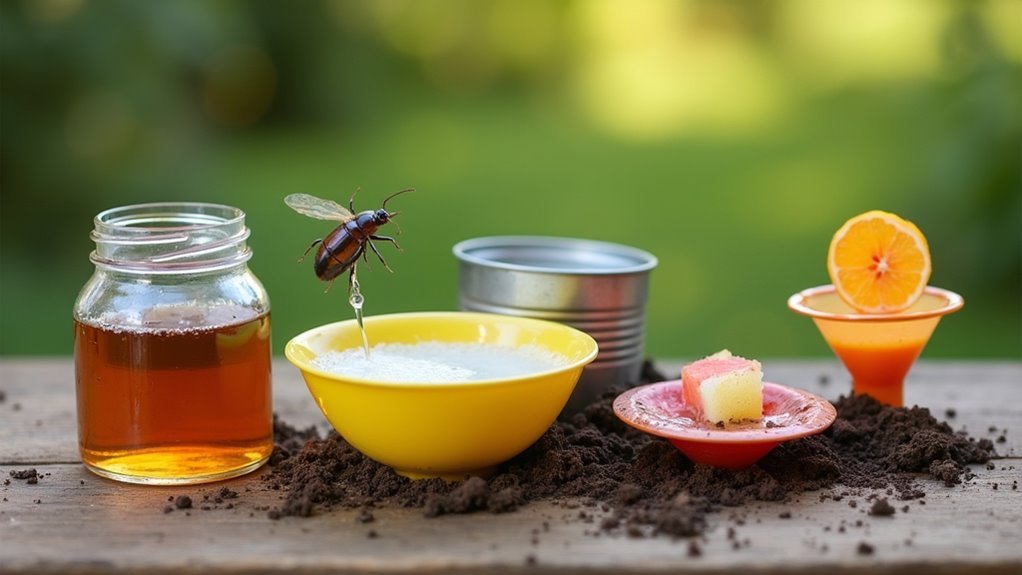You can establish three powerful outdoor pest barriers using boric acid compounds: sodium tetraborate decahydrate around your foundation perimeter to stop ants, cockroaches, and termites; disodium octaborate tetrahydrate at entry points like door frames and window sills for targeted protection; and sodium metaborate in garden areas to safeguard wooden structures and soil ecosystems. These environmentally-friendly solutions disrupt pests’ digestive systems while maintaining low toxicity for families and pets when applied correctly. The following methods will maximize your barrier effectiveness.
Perimeter Foundation Barriers With Sodium Tetraborate Decahydrate

When protecting your home’s foundation from crawling pests, sodium tetraborate decahydrate—commonly called borax—creates an effective perimeter barrier that’ll keep ants, cockroaches, and termites at bay.
This boric acid compound works by disrupting household pests’ digestive system, causing dehydration and death when insects contact the fine powder. You’ll appreciate its low toxicity profile, making it safe for residential use around family and pets when applied correctly.
Borax safely disrupts pest digestive systems while maintaining low toxicity levels around families and pets when properly applied.
This environmentally friendly pest control solution provides a long-lasting barrier that remains effective for months if kept dry.
Apply the powder along your foundation’s perimeter for ideal coverage. You’ll need to inspect and replenish the barrier regularly, especially after rainfall or irrigation that can wash away this effective pest control treatment.
Entry Point Protection Using Disodium Octaborate Tetrahydrate
While termites and wood-boring beetles often target vulnerable entry points around your home’s wooden structures, disodium octaborate tetrahydrate provides superior protection against these destructive pests. This powerful insecticide disrupts insect digestive systems while offering low toxicity to humans and pets, making it a safe choice for pest management.
| Application Area | Form | Protection Benefit |
|---|---|---|
| Foundation walls | Solution spray | Penetrates wood fibers deeply |
| Door frames | Dust application | Creates lasting barrier zone |
| Window sills | Brush-on treatment | Prevents beetle infestations |
| Deck supports | Injection method | Stops termite colonization |
You can apply this wood preservative at outdoor entry points using various methods. Beyond targeting wood-destroying pests, it prevents fungal growth, extending your wooden structures’ lifespan while maintaining effective long-term protection.
Garden and Landscaping Pest Control With Sodium Metaborate Applications

Although garden pests can devastate your carefully cultivated landscape, sodium metaborate offers extensive protection for both wooden garden structures and the surrounding soil ecosystem.
Sodium metaborate delivers comprehensive garden protection, safeguarding wooden structures and soil ecosystems from devastating pest damage while maintaining environmental balance.
You’ll find this compound effectively controls wood-destroying insects and prevents fungal growth across your garden beds and landscaping features. When you apply sodium metaborate strategically, it creates a protective barrier that targets termite infestations while preserving beneficial organisms in your outdoor pest management system.
You can choose between powder and liquid formulations based on your specific application needs around wooden structures.
Regular applications maintain long-lasting protection, extending your landscaping features’ lifespan. This versatile approach guarantees your garden remains healthy while defending against destructive pests that threaten both structural elements and plant health.
Frequently Asked Questions
Can You Use Boric Acid Outdoors?
You can use boric acid outdoors effectively against termites and ants. Apply it in dry areas where moisture won’t wash it away, and keep it away from water sources, pets, and children for safety.
How to Use Boric Acid for Pest Control?
You’ll apply boric acid by creating barriers around entry points, mixing it with attractive baits like sugar, keeping it dry, and wearing protective gear while regularly inspecting and replenishing applications.
Why Am I Seeing More Roaches After Using Boric Acid?
You’re seeing more roaches because boric acid kills slowly, so they’re still moving around before dying. Insufficient application, missed hiding spots, or washing away reduces effectiveness, allowing survivors to reproduce.
What Happens if Boric Acid Gets Wet?
When boric acid gets wet, it’ll dissolve and wash away, losing its pest control effectiveness. You’ll need to reapply it after rain or water exposure since wet conditions also cause clumping and uneven distribution.
In Summary
You’ll find these three boric acid barrier methods highly effective when you’re dealing with persistent outdoor pests. Don’t forget to reapply your perimeter treatments after heavy rain, and you should always wear protective gear during application. Remember that consistency’s key – you can’t expect immediate results, but you’ll notice significant pest reduction within two weeks. These barriers won’t harm beneficial insects when you apply them correctly around your property’s vulnerable areas.





Leave a Reply